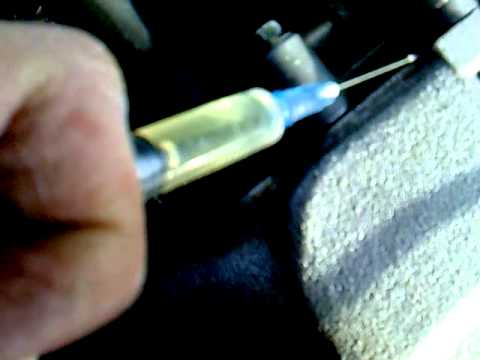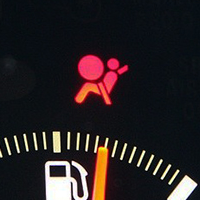
Air leaks
Content
When the car, when starting from a standstill (sharply), starts to choke for a second, and in some cases even stalls, this is 99% air leakage. Since excess air entering the internal combustion engine cylinders causes a sharp depletion of the mixture and, as a result, ignition difficulties. The motor troit and can stall at idle.
More details can be found in this article.
Air leakage symptoms
Symptoms of air leakage DVSm are most often unambiguous:
- Insecure start in the morning.
- Unstable idle – idle speed fluctuates constantly even below 1000 rpm. The ICE may stall. On a car with a carburetor ICE, the quality and quantity screw becomes insignificant for setting the XX mode since the air bypasses the XX channel.
- Power drop - in the intake tract on systems with MAF (mass air flow sensor) - low idle speed; on systems with a MAP sensor (absolute pressure sensor), on the contrary - increased rpm XX, lambda errors, lean mixture, misfires.
- Increase in fuel consumption - in order to get under way and continue moving, you need to constantly keep high speeds, while being in a lower gear for a longer time.
Air leaks
The main places through which suction can occur include:
- intake manifold gasket;
- throttle gasket;
- section of the branch pipe from the air filter to the throttle unit;
- O-rings for injectors;
- vacuum brake booster;
- vacuum hoses;
- adsorber valve;
- idle speed regulator (if any).
Separately, it is worth considering the places of air leakage on carburetor ICEs - there are no electronics there, and air can only be sucked on a vacuum booster or somewhere in the carburetor.
Suction points (carburetor)
- The screw has the quality of the fuel mixture.
- For a gasket under the carburetor - areas with soot are a sure sign.
- Through a loose throttle.
- Through the choke axles.
- Violations of the integrity of the throttle damper diaphragms, economizer or starting.
Air leaks in the diesel fuel system
In the fuel system of a diesel internal combustion engine, airing usually occurs due to a leaky junction of the pipes of the low-pressure fuel system (from the tank to the filter and from the filter to the injection pump).
The reason for the suction on a diesel car
Air leaks in a leaky fuel system occurs because the atmospheric pressure is higher than that created when the pump sucks diesel fuel from the tank. It is practically impossible to detect such depressurization through a leak.
On modern diesel ICEs, the problem of air leakage into the fuel system is much more common than on older diesel engines. All through changes in the design of the supply of fuel hoses, since they used to be brass, and now do plastic quick-releasethat have their own lifespan.
Plastic, as a result of vibrations, tends to wear off, and rubber O-rings wear out. This problem is especially pronounced in winter on cars with a mileage of more than 150 thousand km.
The main reasons for sucking are often:
- old hoses and loose clamps;
- damaged fuel pipes;
- loss of seal at the fuel filter connection;
- the tightness in the return line is broken;
- the seal of the drive shaft, the axis of the fuel supply control lever or in the injection pump cover is broken.
In most cases, the banal happens. aging of rubber seals, moreover, the fuel system can be airy in case of damage to any of the branches, both direct and reverse.
Signs of air leaks
The most common and common - the car in the morning or after a long downtime, stops starting quickly, you have to turn the starter for a long time (at the same time there is a small smoke from the exhaust - this will indicate that fuel has entered the cylinders). A sign of a large suction is not only a hard start, but when driving, it starts to stall and troit.
This behavior of the car is due to the fact that the high-pressure fuel pump does not have time to pass foam through itself only at high speeds, and at idle it cannot cope with a large amount of air in the fuel chamber. To determine that the problem in the operation of a diesel internal combustion engine is connected precisely with air leakage, replacement of standard tubes with transparent ones will help.
How to find a leak in the diesel fuel system
Air can be pulled in a joint, in a damaged tube, or even in a tank. And you can find it by elimination, or you can apply pressure to the system for vacuum.
Most the best and most reliable way - find leaks by the elimination method: connect the diesel fuel supply not from the tank, but from the canister to each section of the fuel system. And check it one by one - immediately connect it to the high-pressure fuel pump, then connect it in front of the sump, etc.
A faster and simpler option to determine the location of the suction is to supply pressure to the tank. Then, in the place where the air is sucked in, either a hiss will appear, or the connection will begin to get wet.
Intake manifold air leaks
The essence of air leakage in the intake tract lies in the fact that, together with the fuel, excess air and unaccounted for by the DMRV or DBP sensor enters the internal combustion engine, which leads to a lean air-fuel mixture in the cylinders. And this, in turn, contributes to the incorrect operation of the internal combustion engine.
Air leakage reason
- Mechanical impact.
- Overheating (affects the elasticity of the gaskets and sealant).
- Excessive abuse of carburetor cleaners (severely softens sealant and gaskets).
Most it is problematic to find the place of air leakage in the area of the gasket between the cylinder head and the intake manifold.
How to find air leaks in the manifold
On gasoline ICEs, air not taken into account by the sensors enters the intake manifold through leaks or damage to the air ducts, leaky nozzle seals, and also through the hoses of the vacuum brake system.
We figured out the standard places for leaks, now it’s also worth figuring out how to look for air leaks. There are several basic search methods for this.

Simple cigarette smoke generator

DIY oil smoke generator
The easiest way to check if there is air leaks in the intake tract after the flow meter - unscrew the air inlet pipe together with the sensor from the air filter housing and start the internal combustion engine. Then cover the assembly with the sensor with your hand and look at the reaction - if everything is normal, then the motor should stall, strongly squeezing the pipe after the air sensor. Otherwise, this will not happen and most likely a hiss will be heard. If it is not possible to find air leakage by this method, then you need to continue the search by other available methods.
Often they are looking for suction either by pinching the hoses, or by spraying possible places with combustible mixtures, such as: gasoline, carbcliner or VD-40. But the most effective method of finding a place for passing unaccounted air is to use a smoke generator.
Search for air leaks
usually, problems with idle, as well as the appearance of a lean mixture error, occur only with strong suction. Slight suction can be determined by observing the fuel trim at idle and high speeds.
Checking air leakage by pinching the hoses
in order to find a place for leakage of excess air, we start the internal combustion engine and let it work for a while, and at this time we put our ears open and try to hear the hiss, and if it was not possible to detect, then we pinch the hoses that go to the intake manifold (from the regulator fuel pressure, vacuum booster, etc.). When, after clamping and releasing, changes in the operation of the internal combustion engine are observed, it means that there is a breakdown in this area.
also sometimes used compressed air search method. To do this, on a muffled internal combustion engine, close the pipe from the filter and pump air through any tube, having previously treated the entire intake tract with soapy water.

Search for air leakage by spilling gasoline
How to detect spray suction
To establish the place where air is leaking into the internal combustion engine, the method of spraying the joints with some combustible mixture with the engine running effectively helps. It can be either regular gasoline or a cleaner. The fact that you have found a place where it sucks will be prompted by a change in the speed of the internal combustion engine (they will fall or increase). It is necessary to draw hot mixture into a small syringe and spray with a thin stream all the places where there may be suction. After all, when gasoline or another combustible liquid enters the place of leakage, it immediately seeps into the combustion chamber in the form of vapors, which leads to a jump or drop in speed.
When looking for leaks, it is worth splashing on:
- Rubber pipe from the flow meter to the idle speed regulator and from the IAC to the valve cover.
- Intake manifold connections to the cylinder head (in the place where the gasket is located).
- Connection of the receiver and the throttle branch pipe.
- Injector gaskets.
- All rubber hoses at the clamps (inlet corrugation, etc.).
Smoke generator suction check
Few people have a smoke generator lying around in the garage, so this method of searching for leaks in the system is mainly used in service stations. Although, if in the garage conditions the suction methods discussed above could not be found, then a primitive smoke generator can be produced, although the usual one also has a simple design. Smoke is injected into any opening in the intake tract, and then begins to seep through the gaps.
